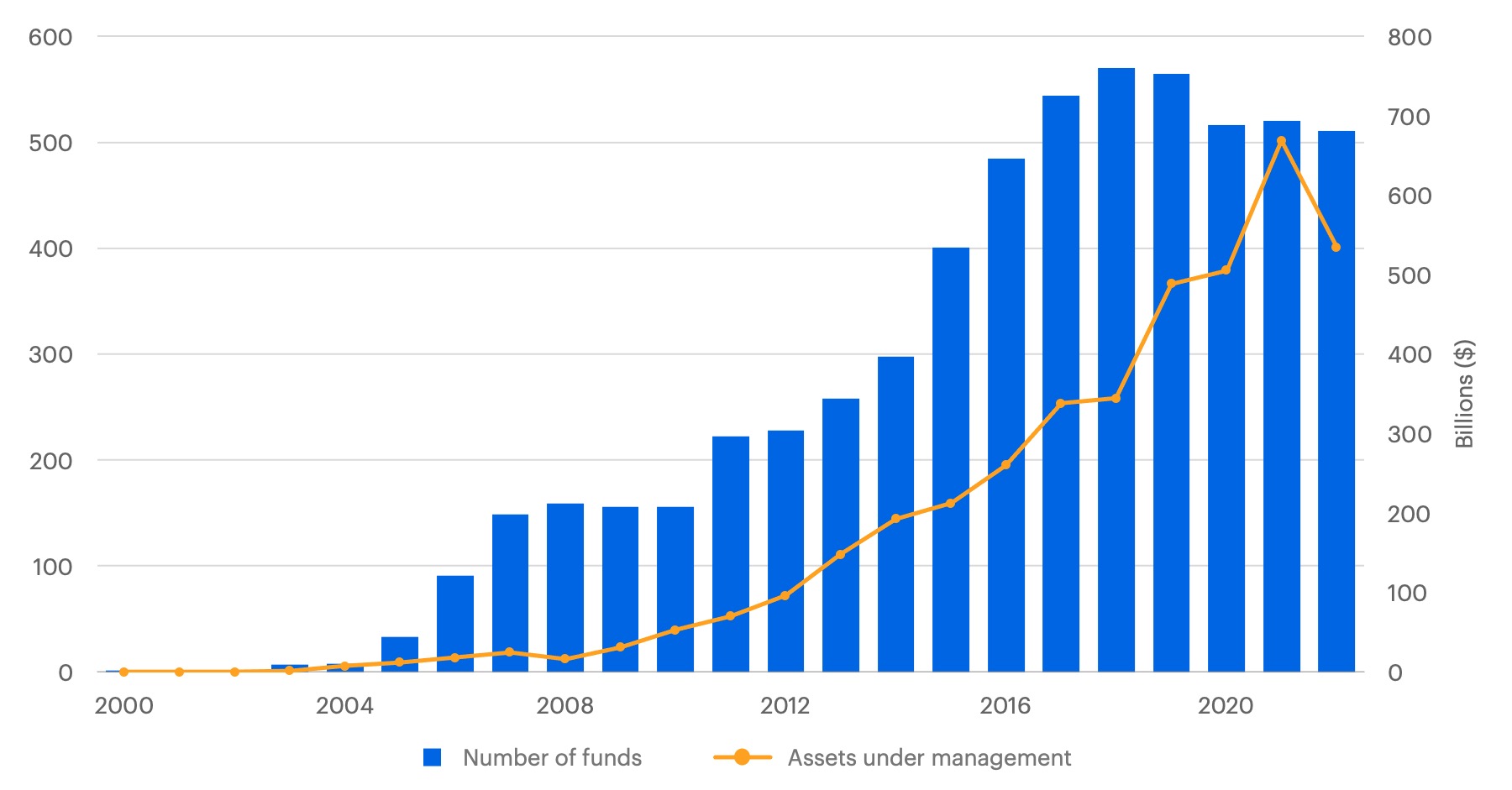Smart Beta: The middle ground between active and passive investing
Morgan Stanley Wealth Management
03/27/23Summary: Factor-based investing strategies, also known as “smart beta,” track popular stock indices, but offer greater exposure to index constituents with attractive characteristics, or “factors.” Here’s what investors should know.

Investors who passively tracked benchmark stock and bond indices in 2022 likely felt the pain of steep losses. What’s more, against a backdrop of potentially elevated inflation and higher interest rates, Morgan Stanley’s Global Investment Committee forecasts muted returns for those asset classes over the next several years.
But there are approaches investors can take to potentially boost portfolio performance without taking undue risk or incurring hefty management fees. One worth considering is “smart beta,” also known as factor investing.
Think of factor investing as a middle ground between passive and active investing. Like many passive index funds and exchange-traded funds (ETFs), factor-based strategies include constituents from popular stock indices like the S&P 500. Instead of weighting holdings based on market capitalization, however, these strategies offer greater exposure to index constituents with certain characteristics, or “factors”—such as those sought by active fund managers—that have been shown to deliver excess returns or lower volatility over time.
As such, smart beta strategies aim to outperform traditional cap-weighted benchmarks in absolute or risk-adjusted terms and usually have lower expenses than traditional actively managed funds.
These strategies have steadily grown in number and assets over the past two decades, although their popularity has waned somewhat since 2018. As of December 2022, there were $664 billion in total assets under management with 503 U.S.-listed strategies, down about 12% from a peak in 2018.
Smart beta ETF strategies have grown in popularity

Source: Morning Star Direct, Morgan Stanley Wealth Management ETF Research as of December 2022
Factor investing can be complex. Investors often have questions about which strategies have performed well and how they should consider implementing factor investing in their portfolio. Here’s what you should know.
Which factors have performed well historically?
Certain factor-based strategies have delivered higher returns over the last 20 years, suggesting they can add long-term value to a portfolio, albeit with higher risk than their benchmark index in some cases. Here are some common, low-cost options available in highly liquid ETFs:
- Growth focuses on companies with high growth potential in revenues, earnings, and other corporate fundamentals.
- Value targets stocks with inexpensive valuations based on metrics like price/book value, price/earnings, and price/sales.
- Dividend focuses on companies that have higher than market level dividends or have increased their dividends for a certain number of consecutive years, known as dividend growers.
- Momentum tracks stocks with high returns relative to the market over the last six to 12 months.
- Size provides greater exposure to smaller-capitalization stocks compared with traditional cap-weighted indices.
Meanwhile, other factors may be attractive because they are historically less risky than their benchmark index and, in some cases, may deliver equivalent or only slightly lower returns. Two examples include:
- Quality focuses on companies with healthy balance sheets and consistent, high profitability.
- Low volatility does what its name suggests, targeting stocks with low realized volatility in price returns.
How should investors approach factor investing?
To start, it’s important to note some risks. Most ETFs tracking factor indexes have limited performance histories and have not made it through a full market cycle, which warrants caution. Additionally, some single-factor strategies often experience sharp, cyclical downturns, and their returns may prove disappointing over one- to three-year time periods.
Considering that, Morgan Stanley’s strategists recommend a long-term approach to factor investing involving one of the following:
- Multifactor strategies: For example, an investor may choose a strategy that combines momentum, quality, size, and value by maximizing exposure to stocks with several of those factors, in combination. This approach may allow investors to gain greater portfolio diversification and rely less on any one factor to help drive returns.
- A well-diversified portfolio of single factor strategies: For example, part of an investor’s portfolio might be allocated to momentum, another to dividend growers and still another to quality. This approach may allow investors to pursue multiple goals, such as improving returns, generating income, or reducing risk.
Investors interested in applying factor-based strategies can use the E*TRADE from Morgan Stanley ETF screener to search from more than 500 smart beta ETFs. From the advanced screener, under the Portfolio section, check the Smart Beta box. Additionally, Core Portfolios clients can choose to customize their portfolio with smart beta ETFs.
Factor investing may help investors improve their portfolio’s risk-adjusted performance over the long-term, but it should be considered with individual financial goals and risk tolerance levels in mind
The source of this article, The Middle Ground Between Active and Passive Investing, was published on March 8, 2023.
How can E*TRADE from Morgan Stanley help?
ETF and stock screeners
Use our ETF screener or stock screener (login required) to quickly focus in on the kinds of funds or stocks you're looking for.